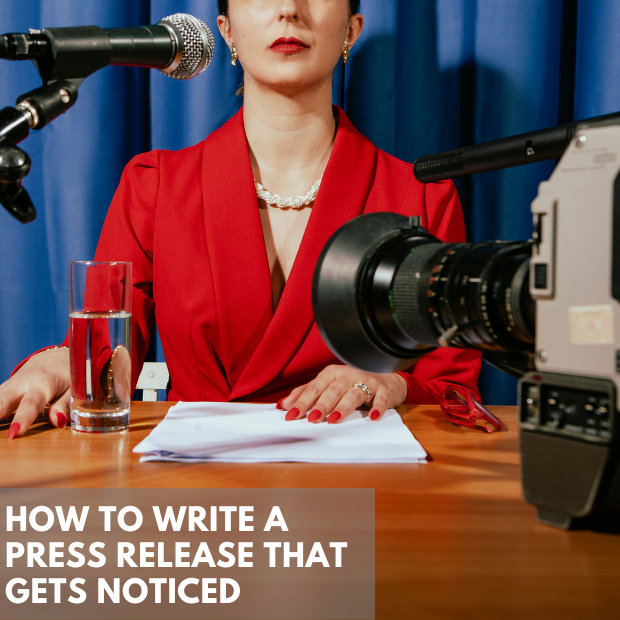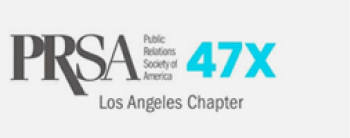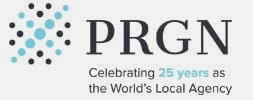
How To Write A Press Release That Gets Noticed
This article aims to guide you through the essential elements of a compelling press release, offering practical advice and insider tips to ensure your news not only gets noticed but also inspires action.
So, how can you write a press release that gets noticed? This article presents the top tips for writing effective press releases.
5 Tips For Writing Press Releases That Grab Attention
1. Ensure It’s Newsworthy
Journalists are more likely to be interested in newsworthy information as it meets journalistic standards and is credible. Therefore, when writing your press release, ensure you present everything in a factual and objective manner.
Instead of telling readers “Hey! Look at my business,” focus on newsworthy angles like:
- New product/service launches
- Customer success stories
- Partnerships with influencers or celebrities
- Ongoing contests and competitions
- Awards you’ve won
Other key factors that will help make your press release newsworthy include:
- Relevance: The releases should clearly show why the news is important to the target audience.
- Timeliness: All information in the release should be fresh and timely.
- Human interest: The story should be compelling and relatable to the target audience.
- Uniqueness: It should highlight what sets you apart from similar brands with similar stories.
2. Create An Attention Grabbing Headline
Crafting an attention-grabbing headline for your press release is crucial for capturing the interest of journalists and readers alike. Since today’s attention span is short, recipients will quickly scan the headline of your press release before determining if they should read or ignore it. A well-crafted headline entices recipients to open the email or click on the release and sets the tone for the entire story.
It communicates the essence of your news in a concise and impactful manner, guiding readers on what to expect. For example, a headline like “Revolutionary Grooming Product Solves Age-Old Problem” immediately piques curiosity and prompts readers to learn more about the innovative solution being introduced.
No matter how interesting your news is, avoid using all caps or exclamation marks in your headline as most readers consider them equivalent to shouting. Also, keep the headline short – around 70 characters. This prevents it from being cut off in email previews or search engine result pages (SERPs).
3. Provide More Information In Your Subtitle
After your headline piques the curiosity of the reader, the subtitle provides additional context and clarifies the main headline. It captures further interest from journalists and readers and invites them to read the rest of the press release.
When writing your subtitle, include the information that’s most likely to inform, impress, or rouse your audience’s interest.
For instance, a suitable subtitle for a healthcare organization might be “
Evidence-Based Results: The Impact
- Highlighting any studies, trials, or data that support the effectiveness of your solution.
4. Answer The Media’s Questions
Ever heard of the 5Ws and H? This is a checklist that journalists use to ensure that the first paragraph of a newsworthy story contains all the essential points. This checklist also applies when writing a press release.
Your lead should answer the following questions: Who, What, Why, When, Where, and How.
These basic questions are the heart of news stories and they help you relay all the facts clearly and concisely. Additionally, since journalists are bombarded with tons of stories daily, they don’t have time to read whole press releases. Therefore, hitting them with the key takeaways early on increases the chances of your press release getting noticed and consequently, published.
5. Polish Your Press Release
Grammatical errors and typos will get your press release rejected quickly. Journalists are inundated with information, so a well-edited release stands out and is more appealing.
Editing your press release before sending it to a journalist ensures that the information is clear, accurate, and concise. This increases the likelihood of your news being understood and covered.
Errors, whether grammatical, factual, or typographical, can undermine your credibility and the professional image of your organization. A clean, error-free release reflects attention to detail and professionalism. Also, editing allows you to align your message more effectively with your target audience and the media outlet’s style, making it more relevant and engaging for them.
Final Thoughts
A press release is vital to your PR strategy as it helps improve brand awareness, increase brand visibility, and is a credible source of information. However, getting your press releases noticed by local, let alone national news outlets can be challenging.
To increase your chances of getting noticed, make sure you deliver newsworthy, and well-edited press releases. Also, ensure that your headlines and subtitles are catchy and informative, and make sure your story answers the 5Ws and H.
For professional help writing press releases that resonate with your audience and get noticed by media, contact The Hoyt Organization.









